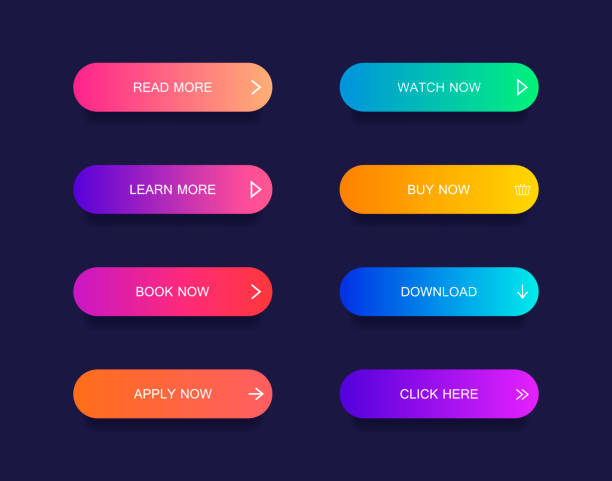
It can be difficult to create a mobile-first site or app. But with the right tools and strategies, it is possible. Your business should create an experience that is user-friendly and optimized for each user regardless of their device or service.
The best part about the mobile web? It allows you to create rich, personalized applications that can be accessed by a wide range of devices. In fact, more than a billion people own smartphones, and millions of others access the Internet via mobile devices. Mobile has become an integral part of the internet experience, especially in developing countries with limited internet connectivity. This means that your mobile website is the first place to pipe content, and you're in the driver's seat when it comes to creating a mobile experience that will drive traffic and revenue.

A well-designed and optimized mobile site or app can help increase revenue and conversions. A mobile site with a quick and simple design can increase user interaction by up to nine times. Designing a mobile site can help increase revenue and brand recognition.
While the mobile web is not the best platform for every product, it's a smart move to focus your efforts on the handheld devices and develop a mobile-first strategy for your business. According to Statista in 2018, 52.2% all website traffic was generated by mobile devices. Mobile is the most popular online interaction platform worldwide. This statistic is even more pronounced when you consider the fact that, in 2015, a basic smartphone retailed for just $18.
As mentioned above, the mobile web has become more and more diverse than the desktop counterpart. This means that you need to take advantage of the mobile browser's capabilities and re-evaluate your user interaction patterns. One of the best ways to do this is by developing a responsive web design that can automatically change its layout to fit a variety of different mobile devices.
Although the mobile web is still in its infancy, developers have an exciting opportunity. In addition to designing for mobile, it's a good idea to take advantage of features like responsive JavaScript calls and conditional script loading to ensure that your website looks great on any screen size.

While designing for the mobile web can be complex, it is also fun. A mobile-first strategy can help you make the most of mobile devices' unique features. It also allows you to introduce new design and functionality to your desktop site. It can also be a great way to provide users with what they want quickly while reducing your design- and development costs.
FAQ
How much do web developers make?
A website is a project you can work on for your own money. You'll likely make $60-$80 an hr. But if you want to charge a lot more, you should consider becoming an independent contractor. A typical hourly rate for a freelancer could be between $150 and $200.
How Much Does It Cost To Create An Ecommerce Website?
This will depend on whether you are using a platform or a freelancer. eCommerce sites typically start at around $1,000.
You can expect to pay between $5000 and $10,000 for a platform once you have decided.
The average cost of a template will not exceed $5,000. This includes any customizations you may need to match your brand.
What technical skills do I need to design and construct my site?
No. You just need to be familiar with HTML and CSS. You can easily find tutorials online that teach both HTML and CSS.
How do I create a free website?
It all depends on the type of website you are trying to build. Are you looking to sell products, build a website, or create a portfolio online?
A combination of HyperText Markup Language, Cascading Stil Sheets and HTML can create an essential website. Although HTML and CSS can be used to create simple websites, web developers prefer using a WYSIWYG editor like Dreamweaver or Frontpage.
Hiring a freelance developer is a good option if you don’t have much experience with designing websites. They can help you create a custom website based on your needs.
Freelancers can charge a flat fee or an hourly rate. The cost of hiring a freelancer varies depending on how much work they complete within a given timeframe.
For example, some companies charge $50-$100 per hour. For larger projects, rates are usually higher.
Many freelance websites also list open jobs. You can search there before you contact potential developers directly.
Statistics
- Did you know videos can boost organic search traffic to your website by 157%? (wix.com)
- In fact, according to Color Matters, a signature color can boost brand recognition by 80%. There's a lot of psychology behind people's perception of color, so it's important to understand how it's used with your industry. (websitebuilderexpert.com)
- Is your web design optimized for mobile? Over 50% of internet users browse websites using a mobile device. (wix.com)
- The average website user will read about 20% of the text on any given page, so it's crucial to entice them with an appropriate vibe. (websitebuilderexpert.com)
- Studies show that 77% of satisfied customers will recommend your business or service to a friend after having a positive experience. (wix.com)
External Links
How To
What is website hosting?
Website hosting is the location where people go when they visit websites. There are two types of website hosting:
-
Shared hosting – This is the most affordable option. Your website files reside in a server managed by another company. Customers who visit your website send their requests via the Internet over to that server. The request is then handed to the owner of that server.
-
Dedicated hosting – This is the most expensive option. Your website resides entirely on one server. There are no other websites sharing space on the server. Your traffic remains private.
Shared hosting is preferred by most businesses because it's cheaper than dedicated hosting. Shared hosting allows you to have your website run by the company who owns the server.
But there are pros and cons to both options. Here are the differences:
Shared Hosting Pros:
-
Lower Cost
-
Easy to Setup
-
Frequent Updates
-
It is available on many Web Hosting Companies
Hosting shared can be as low as $10 per month. Keep in mind, however, that bandwidth is usually included in the price. Bandwidth is how much data you can transfer to the Internet. Even if only you upload photos to your blog or website, high-volume data transfers may incur additional charges.
Once you start, you'll quickly realize why you were paying so much for your previous host. Most shared hosts don't offer any customer support. You'll be on your way after they walk you through setting it up.
A provider with 24-hour telephone support is a good choice. They'll take care of any issues that come up while you sleep.
Cons of dedicated hosting
-
More Expensive
-
Less Common
-
Requires specific skills
With dedicated hosting, you get everything you need to run your website. You don't need to worry about bandwidth usage or RAM (random access memory).
This means you'll have to spend more upfront. However, once your business goes online, you'll discover that you don’t need as much technical support. You'll soon be an expert at managing servers.
Which Is Better For My Business:
This depends on the kind of website that you want. Shared hosting is best for those who only need to sell products. It's easy to set up and maintain. It's easy to set up and maintain, as you share a server with other sites. You will likely be updated frequently.
However, dedicated hosting is the way to go if you want to build a community around your brand. You can put your efforts into building your brand, and not worry about how to handle your traffic.
Bluehost.com has both. Bluehost.com offers unlimited monthly data transfers, 24/7 customer support, domain registrations free of charge, and a 30-day guarantee for your money back.